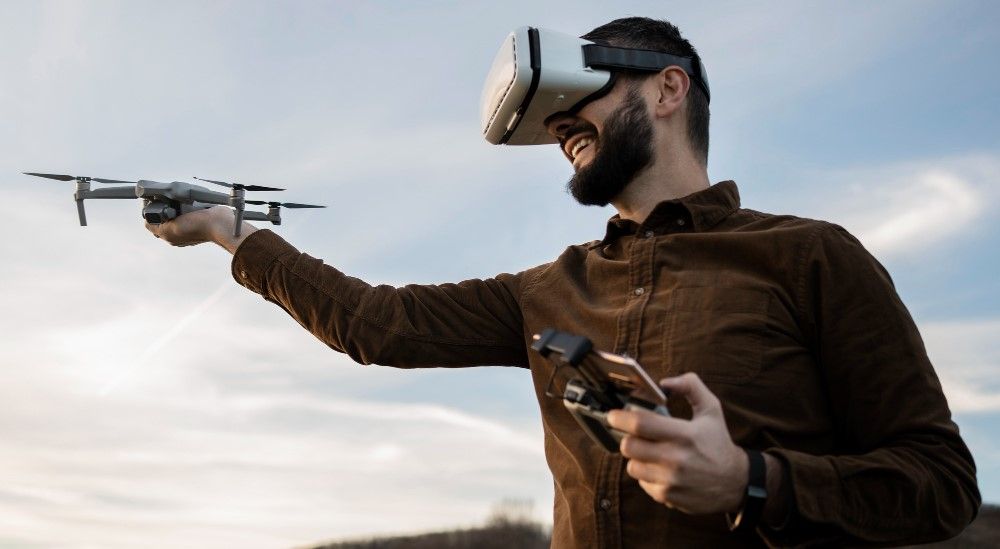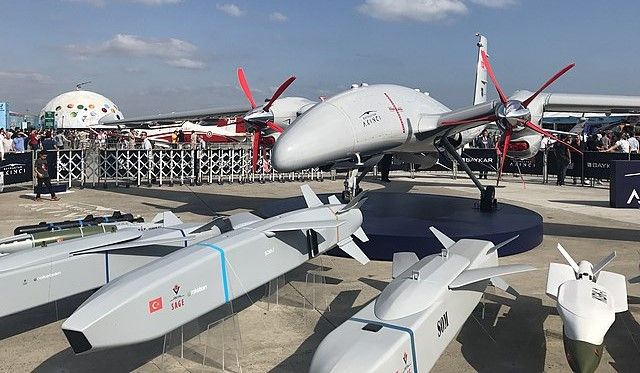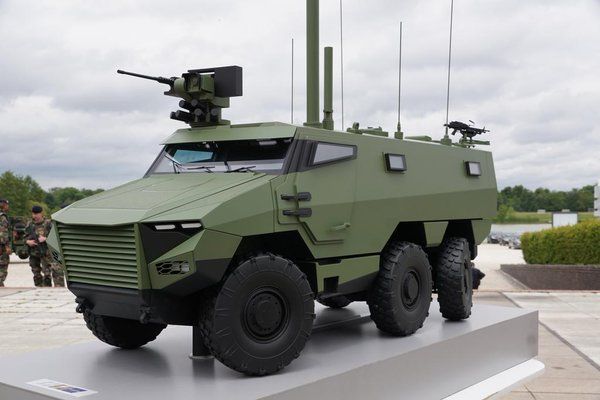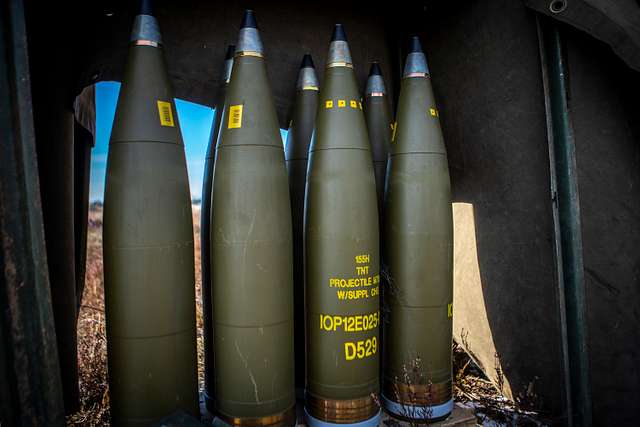French Commander Envisages the End of the Small Drone Wars
Will newer technology and advances in counter-drone weaponry spell the end of the handheld combat drone and first-person view loitering munition?

There exists a long and ongoing tradition of new military technology being neutralized by newer technology.
Soon after the invention of the cannon, castle walls became thicker and curved to deflect shots. Medieval armour was upgraded to limit advances in longbow and crossbow design, while tanks were soon countered with defences, such as tank traps, dragon’s teeth, anti-tank guns, and more recently, weapons such as the javelin missile.
So too, are changes being made on the frontlines in Ukraine. It is a battlefield which has seen a proliferation of drones, a situation which, according to French Army Chief of Staff Gen. Pierre Schill, is merely “a moment in history.”

The comments came during a speech the commander gave at the Eurosatory defence show held in Paris, where he said, “The life of impunity of small, very simple drones over the battlefield is a snapshot in time. Right now, it’s being exploited, that’s clear, and we have to protect ourselves. Today, the sword, in the sense of the aerial drone, is powerful, more powerful than the shield. The shield is going to grow.”
The reason for his belief that small drones would not be long on the battlefield is that he sees them only as filling a gap made by advancing technology.
Specifically, he highlighted the current lack of decent anti-drone weaponry. A situation which has left, “… the sky open to things that are cobbled together but which are extremely fragile.” A point reinforced by the fact that currently as many as 75% of drones in combat areas in Ukraine are lost to electronic warfare.
The general even gave an example of how rapid advances in technology are changing the influencing of drones when calling the Bayraktar drone, ‘the king of the war’ at the start of the conflict. Fast forward several months and this drone model is now largely obsolete as it is too easy to electronically scramble or intercept. He also highlighted the rapid development of first-person view drones when noting that they were responsible for 80% of the current frontline destruction. Yet these systems were almost unheard of half a year ago.

For this reason, Schill believes that smaller drones will disappear from conflict in as little as one or two years.
Certainly, military hardware designers have seen the need to improve counter-drone capabilities, with arms manufacturers such as Thales, Hensoldt, and Safran offering drone defences such as shotguns, cannons, anti-drone missiles, and airburst grenades.
It is for this reason that the French is investing heavily in advanced technology in its next generation of military vehicles. Something Schill describes as being equipped with “extremely powerful” information systems, such that an armoured personnel carrier, such as France’s Griffon, today contains more lines of code than a Rafale fighter jet. This, he explains, is part of the effort towards collaborative combat, where one vehicle may identify a target only to be engaged by another.

According to the industry journal Defense News, this is due to, “the rapid development of microprocessors, which means the gathered data can now be analyzed within the vehicle rather than externally. In combination with on-board artificial intelligence, that will allow for capabilities such as immediate threat detection, including of drones.”
“Everything we had planned is perfectly in place,” notes Schill. “It’s just a question of cost effectiveness on certain capabilities.”
The general also stated that in trying to extract lessons from Ukraine, it was necessary to distinguish between what is situational and related to the kind of terrain and fights being fought, and what is structural. The problems with risk and crisis management that have existed over the previous 30 years will not go away because of the war in Eastern Europe.
“We must remain a versatile army.”
Due to the rapid advancement of military drones, the general stated that the French Army is unable to commit to significant purchasing initiatives as any given technology could become outdated in as little as five months. According to Schill, the latest drones are now more capable at flying than those from two or three years ago because they have more computational capability on board. This allows them to switch frequencies to avoid jamming or navigate based on geography.
This is unlike the procurement of 155mm shells, which can be held in storage for years and still remain combat worthy and useful.

For this reason, a new structure of military procurement must be employed for more high-tech weaponry, such as drones.
According to Schill, future purchases of electronic equipment, including drones, small radios, and smartphones, may be made in smaller batches in order to accommodate the rapid advance of technology. Brigade-level equipment renewals may occur, for example, instead of multi-year programs aimed at providing the whole Army with a new piece of gear.
Yet at the same time, there remained the challenge of supporting a military industrial complex which could allow for fast production en masse if needed.
In conclusion, the rapid proliferation and technological advancements of drones necessitate a proactive approach from military procurement officers to ensure effective integration into defence frameworks. Continuous adaptation to evolving operational requirements, coupled with rigorous research and development, is crucial for maintaining a strategic edge.
Investing in indigenous drone programs, fostering collaborations, and developing comprehensive regulatory frameworks will enable forces to harness the potential of drone technology while mitigating associated risks.
Only by staying ahead of technological trends and anticipating future challenges can forces enhance their operational capabilities and remain battlefield competent.
Photo credit: Freepik, Wikimedia, Nara, Wikimedia, & Public Domain Pictures

